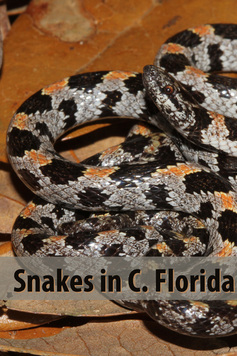 Like what you see? Consider pinning the above image to share with others. Like what you see? Consider pinning the above image to share with others. This month, I've been teaching a community workshop on "Snakes in Polk County." To my great surprise, my class has sold out or resulted in a full classroom at both locations! Why am I surprised? I didn't think so many people were interested in snakes. Clearly, I was wrong. For that reason, I thought it might be helpful to post some of the information I discussed at my class here. Snakes are a fascinating group of critters but tend to evoke all levels of fear and trepidation in the average resident or tourist. Let me assure you... you scare them as well! Below, I've listed some of the information we cover in the class. Snake Facts: |
| For more information on dealing with snakes in residential areas, check out the document series from University of Florida IFAS Extension. Or, check out Florida Fish and Wildlife's website at: http://myfwc.com/conservation/you-conserve/wildlife/snakes/ |
If you're interested in some books for further study, the ones I use in my office are:
| | |
Like what you see? In the interest of full disclosure, I may earn a small commission when you purchase items through the links provided here. There is no increase in cost, to you or anyone else, associated with these links.
Both snake photos on this page were used under thecreative commons license 2.0 in an unaltered form. Clicking on either photo will take you to the source's Flickr page.
Both snake photos on this page were used under thecreative commons license 2.0 in an unaltered form. Clicking on either photo will take you to the source's Flickr page.
"Tortuga, Jack?" - Mr. Gibbs
"Yes, general rule: it's never not a good idea to sail to Tortuga." - Captain Jack Sparrow
"Yes, general rule: it's never not a good idea to sail to Tortuga." - Captain Jack Sparrow
While the Tortuga mentioned by Captain Jack Sparrow and these Tortugas are undoubtedly different, it's a fitting quote for this southern gem. It took my family and I about 5 years to make it to Fort Jefferson, but we finally went. When you're at Fort Jefferson, you are truly isolated and it is gorgeous. I am so glad I had the chance to see this historic landmark in person; photos truly do not do it justice. Thinking about taking a trip to our southernmost National Park? Read on for some of my take-aways from the trip.

Fort Jefferson at Dry Tortugas National Park is a gorgeous piece of our tumultuous naval history. First designed to be the biggest and baddest of all the Union Forts, Fort Jefferson ran into problem after problem after problem. From building a faulty rain catchment system to malaria outbreaks and prison escapes, construction was neither quick nor easy. While rich in history, the Dry Tortugas are poor in resources. Outside of fantastic views and unlimited seafood, there isn't much to work with. Rain is the only source of fresh drinking water and the weather is consistent with what you would expect of hot, subtropical islands. Add to that the common Union uniform of the times, a wool suit with long sleeves and pants, and you've got yourself a pretty uncomfortable situation.
Getting to Fort Jefferson requires a little bit of pre-planning because it is located 70 miles west of Key West, FL; it is not an easy place to venture! Most people travel to the National Park via high-speed ferries operated by a vendor contracted by the National Park Service for $170 per adult but you can also take a personal vessel or a sea plane charter. You'll want to arrive in Key West the night before because you need to check in for the ferry at 7:00AM for a 7:30 departure. I recommend checking the major events happening in Key West prior to scheduling your adventure ... or else you may accidentally book your family trip the final weekend of Fantasy Fest. It was a life experience for sure, but wow. That's all I have to say about that.
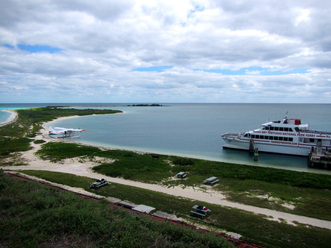
For the modern visitor, the ferry quickly transports you to the island and includes breakfast, lunch, bathrooms, drinking water, and snorkeling equipment because you still can't get any of those items on the island. The National Park Service has done a fabulous job at preserving Fort Jefferson's remote nature. If you're a visitor, keep this in mind and enjoy the solitude. There is no cell service, no concession operators, extremely little electricity (reserved for park staff only), and no wi-fi. Enjoy it.
Things to know:
- The ferry ride is 2.5 - 3 hours long in good weather and you'll spend approximately 4 hours on the island.
- Bring your own non-drowsy motion-sickness medicine and start taking it at least 24 hours in advance. Trust me on that one...
- Bring and wear plenty of sunscreen. While you're at it, bring a hat and sunglasses as well.
- Trips are not cancelled for poor weather. Plan accordingly and go in good spirits. It rains in Florida, life goes on.
- It is illegal to fish or spear-fish in National Park waters. Don't do it.
Unlike most of our National Parks, you really can see most of the Fort in the two - three hours you'll have on the island. However, if you want to snorkel or explore the islands other natural attractions you may want to stay overnight. Primitive camping is permitted on the Dry Tortugas but as mentioned previously, you must bring everything with you. This includes water, firewood or cooking supplies, and food. While there are some fire rings and primitive restrooms, read: semi-permanent porta-johns, the rest of the experience is completely primitive.
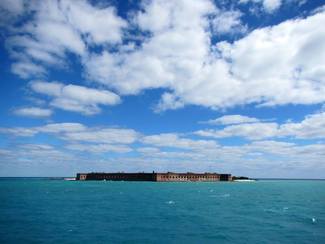
Personally, I can't wait to return for a two-night camping excursion. Visiting for a few hours provided just enough history and scenery to make a primitive camping trip on a National Park island sound perfect to me. If you are interested in seeing some unique Americana, a gorgeous island, and the Florida Keys then I highly recommend taking the ferry out to Dry Tortugas National park for the day. If you're the adventurous type - go camping and let me know how it is. I would love to hear what you thought of the experience.
Like what you read? Share the image below!
The
Pathless
Woods
I'm Shannon.
Let's go somewhere.
Categories
All
Breweries
Camping
Camping Cuisine
Conferences
Crafting
Extension
First Time Homeowner
Flowers
Food
Gardening
Hiking
Hurricane Season
Invasive Species
Office Supplies
One Word
Outdoor Gear
Outreach
Professional Development
Travel
Wildlife
Words To The Wise
Archives
January 2023
December 2016
July 2016
March 2016
September 2015
August 2015
April 2015
March 2015
February 2015
January 2015
November 2014
October 2014
September 2014
August 2014
July 2014

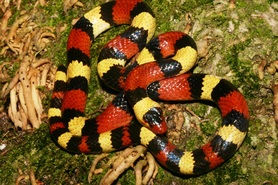
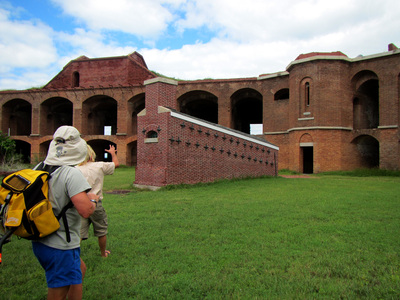
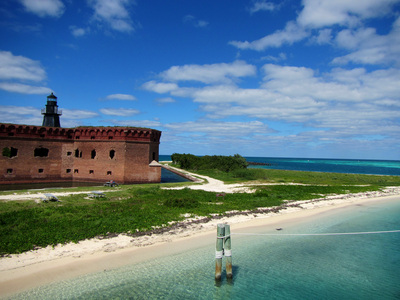
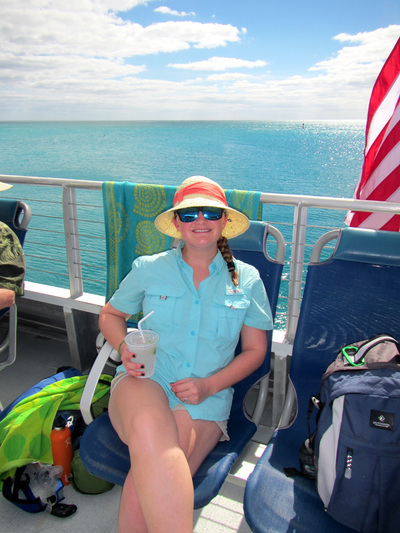
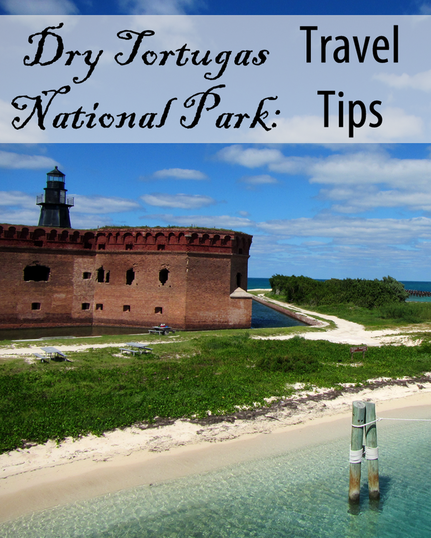

 RSS Feed
RSS Feed
